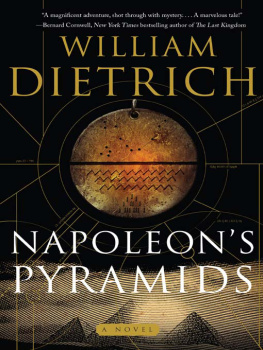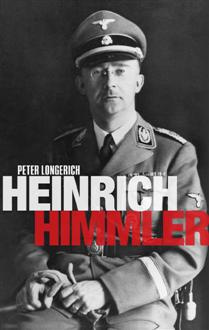
Blood of the Reich
A Novel
William Dietrich

To Holly, once more
The chief task of the Tibet expedition was political and military, not scientific. Details may not be revealed. REICH PROPAGANDA MINISTER JOSEPH GOEBBELS, IN A MEMO TO GERMAN NEWSPAPERS, 1940 My ambition is to see all of physics reduced to a formula so elegant and simple that it will easily fit on the front of a T-shirt. PHYSICIST LEON LEDERMAN, 1993
This novel is inspired by a 1938 Nazi expedition to Tibet, its purpose debated to this day. The story is also based on a real quest. The complex philosophic tradition that gave rise to the Nazi Party included a speculative Vril Society and, in the 1930s, reports of a Wahrheitsgesellschaft, or Society for Truth, which sought Vril to power new machines. Heinrich Himmlers Ahnenerbe, an SS research organization, existed as described. Himmlers castle at Wewelsburg can be visited. The Tibetan legend of Shambhala is real. String theory, dark matter, and dark energy are all part of the theoretical framework of modern physics.
Contents
Berlin, Germany
March 21, 1938
F irst day of spring, and pregnant with the same expectancy that gripped Kurt Raeder at his unexpected summons from Reichsfhrer-SS Heinrich Himmler. The Prussian sky was cold, ragged sunlight dappling the German capital with that glitter atop iron that promised an end to winter. So might Himmler be the pagan sun to part the clouds of Raeders stalled career. So might Raeder win his own expedition.
We have read with interest your books on Tibet , the summons stated. With that simple missive the explorer had been yanked out of the ennui of his university teaching and the gloom of his wifes death, the opportunity like the twin lightning bolts of the SS Rune.
As Raeder walked from the U-Bahn into the heart of Nazi power, Berlin seemed to share his anticipation. The city was its habitual gray, buds swollen but little green on the trees yet. The paving was bright from a nights rain, however, and the capital seemed poised, purposeful, like one of the new steel tanks that had waited on the border for the Anschluss with Austria just nine days before. Now the two nations were united in a single German Reich, and once more public apprehension about a Nazi gamble had turned to excitement bright as the red swastika banners, vivid as a wound. All the world was waiting to see what Germany would do next. All Germany was waiting to see what Hitler would do next. His New Order was improbably succeeding, and on Wilhelm-Strasse, marble blocks and columns were stacked to the sky where the Fhrer s imposing Chancellery was rising. Speer had promised completion in less than a year, and workers scrambled across the pile like frenzied ants. People watched, with pride.
Raeder secretly liked the theatricality of his black SS uniform and the medieval ritual of SS indoctrination. It meant brotherhood, the satisfaction of being one of the chosen. Entry into the new German knighthood in 1933, suggested by a politician friend, had been a way to establish Aryan ancestry and win a measure of grudging deference in a university system glacial in its advancements. But while appointments had come quicker with the exodus of the Jews, Raeders brief fame had not solidified into promotion.
University intellectuals were snobbish toward the Nazis. At school, Raeder had mostly avoided the costume, preferring to blend in with high starched collar and restricting tie through years of brief celebrity, dull instruction, and finally private tragedy.
But now the Reichsfhrer SS had somehow taken notice. Here was the hinge of Raeders life. So the young professor had put on the Schutzstaffel uniform with its runic insignia, both proud and self-conscious. When his faculty colleague Gosling spied him from a caf and joked about it, the zoologist managed the good humor to shrug.
Even scholars have to eat.
Life, the Nazis preached, was struggle.
Raeder knew he cut a fine SS figure. Brown hair a shade too dark to be ideal, perhaps, but handsome and fit from his explorations: erect, wiry, what a German youth might wish to be, the new man, the Aryan prototype. Crack shot, alpinist, university scholar, hunter, author, and scientist for the Third Reich. Lottes death had not been publicized, out of deference to his achievements. His self-doubt he kept to himself.
Almost unconsciously, Berliners swerved around his uniform on the crowded Wilhelm-Strasse, a caution he accepted as normal. The SS was not to be loved, Himmler had preached. But Untersturmfhrer Kurt Raeder, adventurer! His resolute gaze had been in magazines. Women swept by him and peeked.
Pedestrians thinned as he walked past the sterile, massive headquarters of Grings new Air Ministry, the power of the Luftwaffe implied by its modernist bulk. And then thinned still more as he turned left onto Prinz-Albrecht-Strasse and arrived at Number 8, the most notorious address in Nazi Germany. Here was the home of the Reich Security Ministry, which included the SS and Gestapo. Next door was Number 9, the Prinz-Albrecht-Palais Hotel, also subsumed by the growing security bureaucracy. To Raeders eye the home of the police was a more inviting structure than the plain severity of Grings headquarters. With classical arched entry and Renaissance styling, the SS buildings harkened back to the more refined nineteenth century. Only the black-clad sentries who flanked the door hinted at its new purpose.
There were rumors of Gestapo cells in the basement. There were always rumors, everywhere, of the very worst things. This was good, Raeder believed. Menace promised security to those who followed the rules. None could deny the Nazis had brought order out of chaos. While the democracies were flailing, the totalitarian modelsGermany, Italy, Spain, Japanwere on the rise.
This building was the fist of the future. Raeders future.
There was a hush inside, like a church. A grand stairway with thick balustrade, steps carpeted in red plush like a movie palace, led up a flight to a vaulted entry hall. The only decorations were three hanging swastika flags and busts of Hitler and Gring. Public depictions of Himmler were rare; his power was his air of mystery. Bare wooden benches as uncomfortable as pews lined one side of the waiting area, glacial light filtering in from arched, frosted windows. At the far end three steps led to another entry (like an altar, Raeder thought, continuing the church analogy) with black-clad guards presiding instead of black-robed priests. Himmler had modeled his elite on the Jesuits, and SS zeal on the discipline of the Inquisition.
Raeders credentials were checked and he was admitted to a more private reception area, the offices beyond barricaded by a massive counter of dark-stained oak, stout as a dam. Now a more thorough check, this time by a blond-headed Nordic guard of the type the SS put on its posters. The officer scrutinized his insignia skeptically.
An Untersturmfhrer to see the Reichsfhrer ?
Raeder showed the letter that had summoned the SS lieutenant from his residence in the respectable Wilmersdorf district, the apartment haunted now since Lottes death. The Reichsfhrer expects all ranks to serve.
The comment drew no reaction from a man with the expressiveness of a robot. Wait.
The explorer stood stiffly as the orderly spoke into a telephone and then returned it to its cradle. The guard didnt bother to look at Raeder again.
Long minutes passed. Raeder could hear the faint clack of heels on tile, the cricket-murmur of typewriter keys and code machines, the rumble of wooden file drawers sliding out and slamming home. Each muffled ring of distant phone was answered before it could jangle a second time. All was whispered, as if the ministry building had been selected to absorb sound. Was noise from the basement muted, too? The colors were institutional green and cream, the lights a somber yellow.
Next page
















